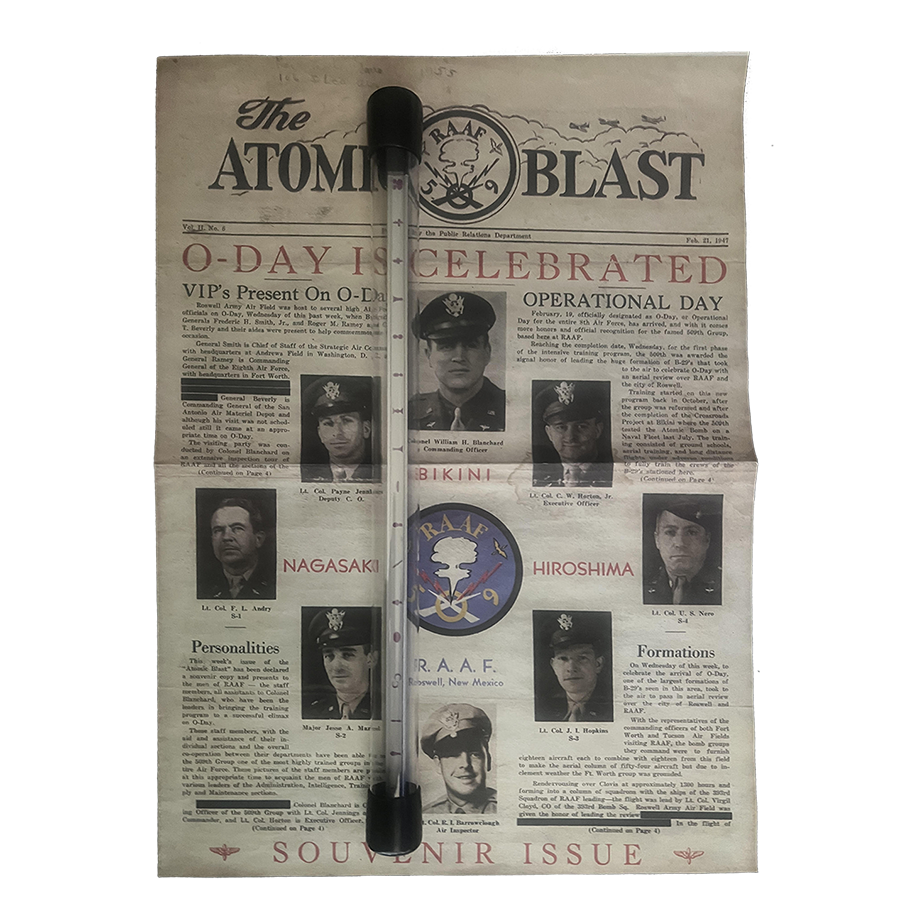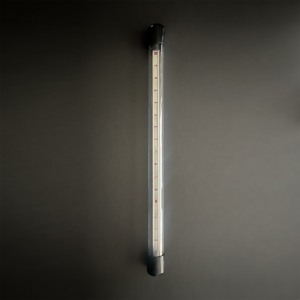In the heart of the New Mexico desert lies the Roswell 509th Nuclear Bombing Grounds, a pivotal military installation steeped in secrecy and significance. Established during World War II, this base emerged as a critical hub for the United States Army Air Forces’ top-tier operations, particularly in the realm of nuclear weaponry.
The Atomic Blast, a newspaper circulated within the base’s confines, served as a window into the inner workings of this highly classified facility. Published in February of 1947, just months before the infamous Roswell UFO incident, its pages illuminated the roster of esteemed military brass associated with the base.
At the helm of the 509th Bombing Group stood Colonel William “Butch” Blanchard, a decorated veteran renowned for his strategic prowess and unwavering leadership. Alongside him, Lieutenant Colonel Walter Haut, the base’s public information officer, lent his eloquence and composure to manage external perceptions of the base’s activities.
Commanding the 393rd Bomb Squadron was Major Jesse Marcel, a seasoned officer whose meticulous attention to detail and unyielding dedication earned him widespread respect among his peers. As the base’s intelligence officer, Marcel played a pivotal role in the events that would later unfold in the deserts of Roswell.
Among the roster of notable figures was Captain Sheridan Cavitt, whose expertise in reconnaissance and surveillance proved indispensable in safeguarding the base’s classified operations. Furthermore, the Atomic Blast shed light on the contributions of technical experts like Master Sergeant Lewis Rickett, whose mastery of cutting-edge technology ensured the seamless functioning of the base’s advanced equipment.
As the pages of the Atomic Blast turned, they offered glimpses into the tightly-knit community of military personnel who called the Roswell 509th Nuclear Bombing Grounds their home. Little did they know that their names would soon be forever linked to one of the most enduring mysteries of the 20th century—the enigmatic crash of an unidentified flying object that would catapult Roswell into the annals of ufology and conspiracy lore.
Amidst the chaos of the Roswell UFO incident, Major Jesse Marcel emerged as a central figure. His meticulous investigation of the wreckage led him to discover metallic beams unlike any he had seen before. Describing these beams with purple symbols etched upon them, Marcel unwittingly laid the groundwork for what would become known as the Roswell I-beam.
The artifact faithfully captures the essence of those enigmatic symbols discovered amidst the wreckage. In the vast expanse of the New Mexico desert in 1947, Marcel’s encounter with these mysterious beams sparked speculation and debate, fueling theories of extraterrestrial visitation and government cover-ups.
Every detail of the Roswell I-beam replica has been painstakingly reproduced, from the precise dimensions to the intricate symbols that adorn its surface. Each symbol mirrors the size and coloration of those found on the original crash debris, lending an air of authenticity to this remarkable piece.
As you gaze upon the Roswell I-beam replica, you can’t help but ponder the mysteries it represents. What message were the beings behind these symbols trying to convey? Are they a glimpse into an alien language, a code waiting to be deciphered? Or are they simply the product of earthly origins, misunderstood and misinterpreted in the chaos of the crash site?
Whether you’re a seasoned ufologist, a casual enthusiast, or simply intrigued by the unknown, the Roswell I-beam replica invites you to embark on a journey of discovery. It serves as a tangible reminder of humanity’s eternal quest to unravel the mysteries of the cosmos and uncover the truth that lies beyond the stars.







Reviews
There are no reviews yet.